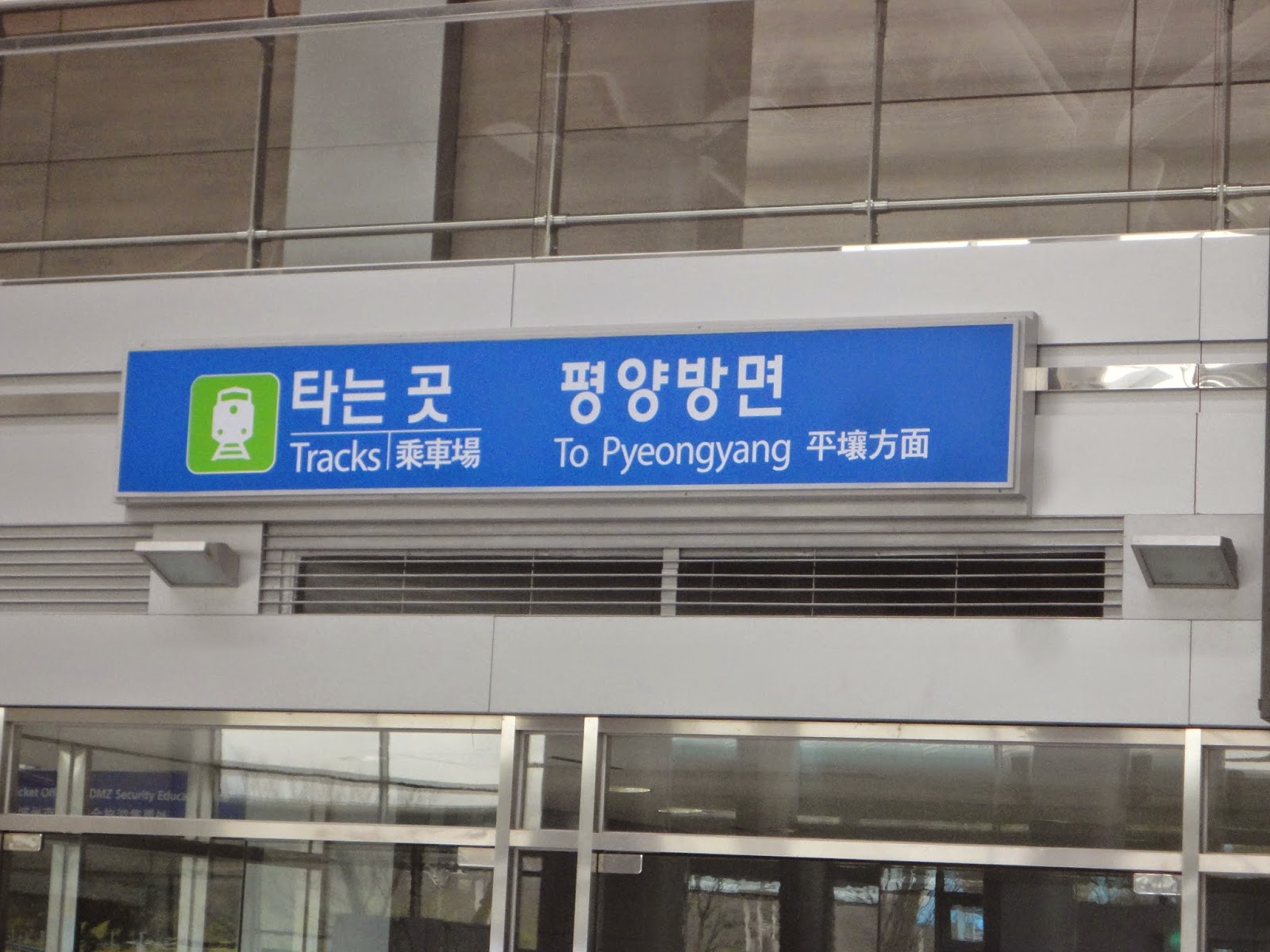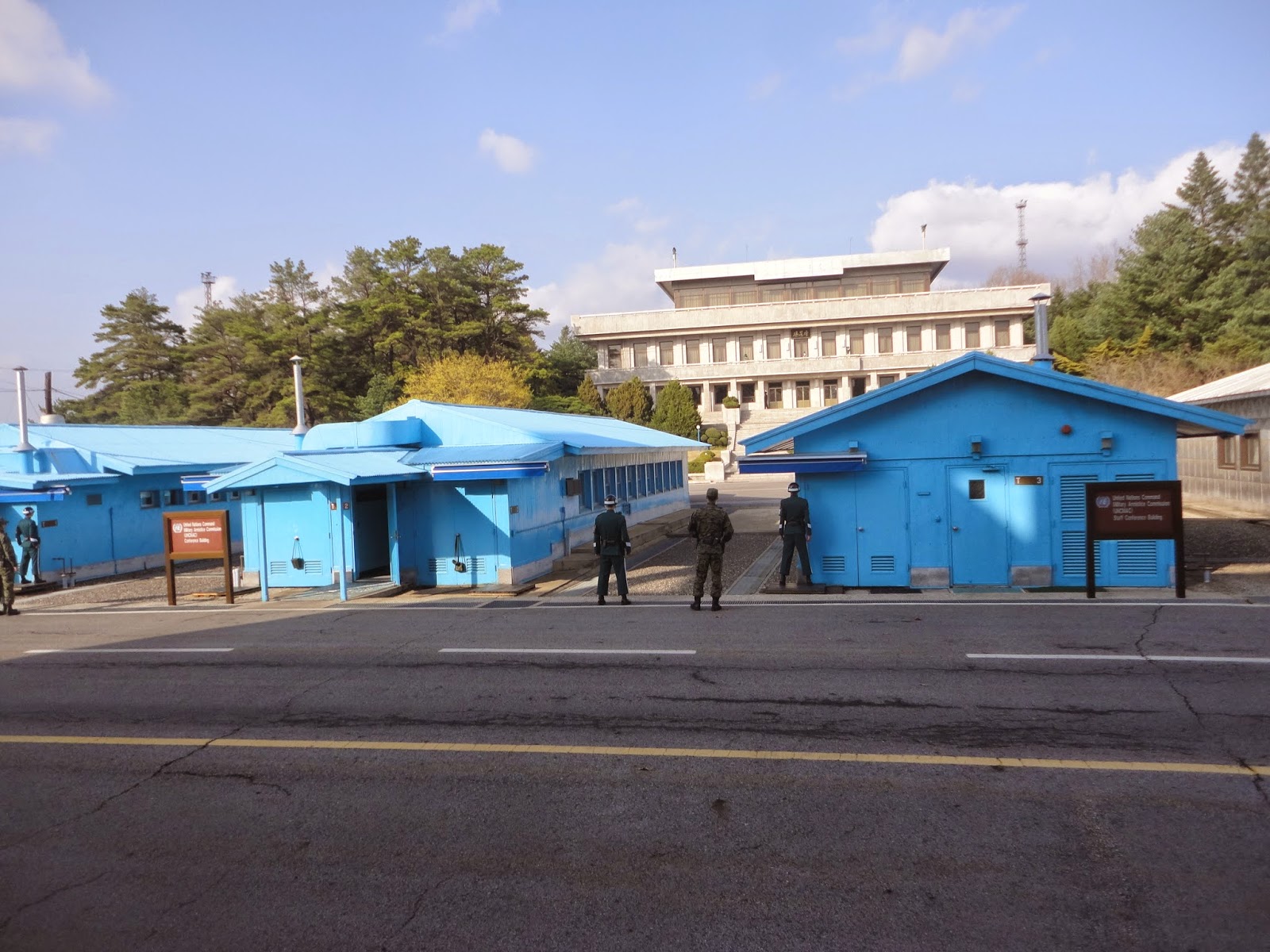I toured the Demilitarized Zone last week.
Most people have probably heard of the DMZ, a 4 km wide buffer zone that runs the length of the Korean peninsula, separating North from South. It is a lingering reminder of the still-unresolved Korean War.
The tour took us to the Dorasan rail station - the northernmost stop in South Korea.
 |
| This is, of course, wishful thinking. The trains don't run north from here. |
We also visited the "Third Infiltration Tunnel", so named because it was the third one discovered. These are a series of tunnels that the North dug under the DMZ, sometimes well into South Korean territory. We were able to go down into the tunnel (now sealed) but we weren't allowed to take pictures.
In lieu of photos, the visitor's center provided this helpful diorama:
And if the diorama wasn't sufficient, they also included a second illustration.
Seriously, though, it was pretty weird. Evidently, the North Koreans painted the walls of the tunnel with black soot so that, were the tunnel discovered they could innocently claim it was a coal mine.
 |
| (Not the actual border) |
The Joint Security Area is a point 2 km into the DMZ that is a point of contact between North and South. It is the only place where soldiers of both arms stand directly across from one another. The guard post above looks across the "Bridge of No Return" (more below).
This is the place, a stone's throw from that guard post, where two American soldiers attempting to trim a poplar tree were killed by North Koreans troops in what became known as the "Axe Murder Incident".
The Bridge of No Return. When the armistice was signed in 1953, both sides brought their prisoners of war, nearly 100,000 men, to this bridge and each was given a choice. Cross the bridge and return home, or stay where you are. If one crossed, however, he could never come back.
Each of these robin's egg blue buildings straddles the border between North Korea and South Korea. They are used as conference rooms for face-to-face talks. The white/grey building in the background is in North Korea.
The gravel runs up to the border (technically the Military Demarcation Line or MDL). There was only a single North Korean soldier (out of range of my camera) on the day of my visit.
Inside one of the UN conference rooms. During tours the door leading into North Korea is locked from the inside and South Korean guards are stationed inside.
The entire look, including uniforms, aviators, and modified Tae kwon do pose are manufactured to be as intimidating as possible.
 |
Have to admit, it felt kind of cool.
The exit into North Korea was guarded by a soldier from the South. We were actually asked at the start of the tour if any of us intended to defect.
 |
| The border line, as seen from the North |
Visiting the DMZ was a bizarre experience. The Korean War was as brutal as they come and still remains unresolved. The people of North Korea suffer greatly under a repressive system of fear mongering and thought control while their cousins to the south have catapulted to become one of the wealthiest nations on Earth. The DMZ serves as a permanent reminder of this state of affairs.
And it's a tourist attraction.













No comments:
Post a Comment